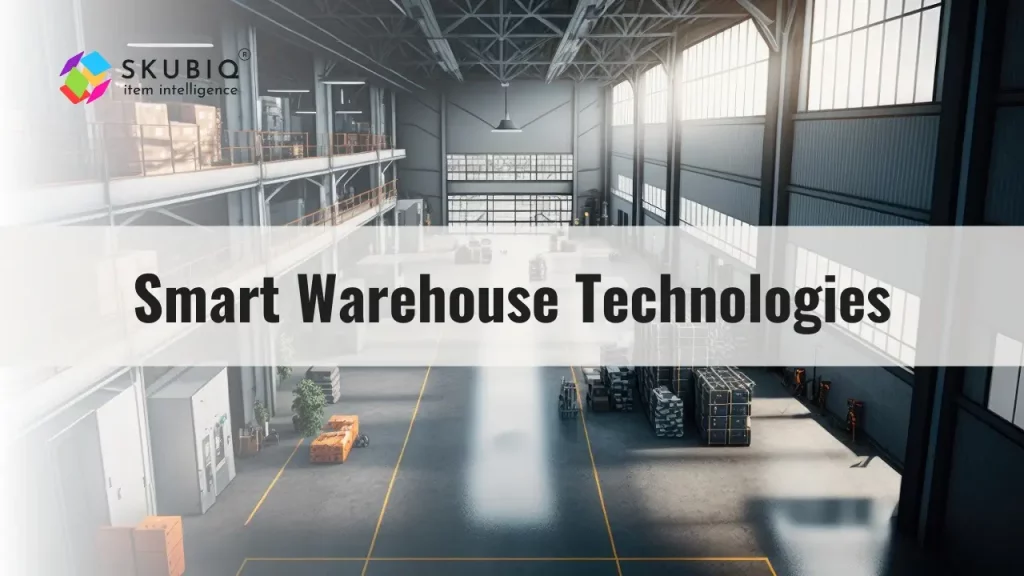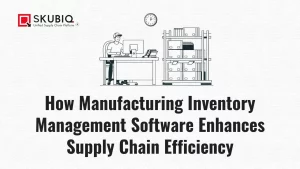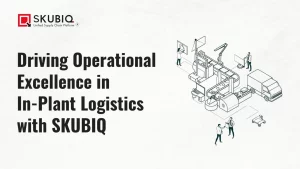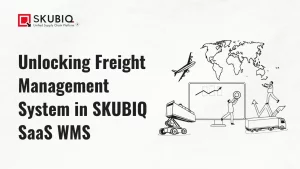In the fast-paced world of supply chain management, warehouse technology plays a pivotal role in ensuring efficiency, accuracy, and overall optimization of operations. As the demand for quicker and more accurate order fulfillment continues to rise, companies are turning to innovative solutions to enhance their warehouse processes. In this article, we will delve into the five most recommended smart warehouse technologies that are transforming the landscape of modern logistics.
1. Warehouse Management System (WMS)
A cornerstone in the realm of warehouse technology, a Warehouse Management System (WMS) is a software application designed to control and optimize warehouse functionality. This technology goes beyond traditional inventory management, offering real-time tracking, order fulfillment, and task prioritization. WMS not only reduces manual errors but also enhances overall efficiency by streamlining workflows.
Implementation of a WMS brings several benefits to the table. Firstly, it provides accurate and up-to-date information on inventory levels, ensuring that stockouts and overstock situations are minimized. Secondly, it facilitates intelligent order routing, helping companies fulfill customer orders faster and with greater precision. Lastly, a WMS integrates seamlessly with other technologies, laying the groundwork for a more comprehensive warehouse automation strategy.
2. Automated Guided Vehicles (AGVs)
In the realm of warehouse automation, Automated Guided Vehicles (AGVs) are emerging as game-changers. These robotic vehicles are equipped with sensors and navigation systems, allowing them to move around the warehouse autonomously. AGVs streamline material handling processes by transporting goods from one location to another without human intervention.
One of the key advantages of AGVs is their ability to enhance safety and reduce the risk of accidents. With advanced obstacle detection and avoidance systems, these vehicles can navigate through busy warehouse environments with precision. Additionally, AGVs contribute to improved efficiency by operating 24/7, reducing downtime and increasing overall throughput.
Sensor Technologies
AGVs utilize an array of sensors, including laser scanners, cameras, and lidar, to perceive their surroundings. These sensors enable real-time mapping of the warehouse layout, detection of obstacles, and precise navigation along predefined paths. The integration of these sensor technologies ensures safe and efficient movement within the dynamic warehouse environment.
Navigation Systems
Navigation systems, often relying on a combination of sensors and algorithms, guide AGVs along optimal routes. These systems can adapt to changes in the environment, avoiding obstacles and optimizing paths to enhance efficiency. The precision and adaptability of AGV navigation contribute to a seamless and responsive material handling process.
3. IoT Implementation in Warehousing
The Internet of Things (IoT) has permeated various industries, and its impact on warehouse technology is nothing short of revolutionary. IoT implementation in warehousing involves connecting devices and systems to gather and analyze real-time data, offering valuable insights into operations. This connectivity extends to equipment, vehicles, and even individual products.
In a smart warehouse, IoT sensors can monitor environmental conditions, such as temperature and humidity, ensuring that sensitive goods are stored under optimal conditions. Furthermore, IoT facilitates predictive maintenance, allowing companies to address equipment issues before they escalate. This proactive approach minimizes downtime and extends the lifespan of crucial machinery.
Environmental Monitoring Sensors
IoT sensors in warehouses can monitor environmental conditions such as temperature, humidity, and air quality. This real-time data ensures that sensitive goods, including pharmaceuticals or perishable items, are stored under optimal conditions. Alerts can be triggered if conditions deviate from the specified parameters, allowing for proactive measures to be taken.
Smart Equipment and Vehicles
Equipment within the warehouse, from forklifts to conveyor belts, can be equipped with IoT sensors. These sensors provide valuable insights into equipment health and usage patterns. Predictive maintenance becomes possible, enabling warehouse managers to address potential issues before they escalate, minimizing downtime and extending the lifespan of crucial machinery.
4. Automated Inventory Control Systems
Accurate inventory management is the bedrock of efficient warehouse operations. Automated inventory control systems leverage technologies such as RFID (Radio-Frequency Identification) and barcoding to track inventory in real-time. These systems not only reduce the likelihood of errors but also expedite the picking and packing processes.
Implementing an automated inventory control system enhances visibility across the supply chain. Companies can monitor stock levels accurately, enabling them to make informed decisions regarding restocking and order fulfillment. This real-time visibility is crucial in meeting customer demands promptly and maintaining optimal stock levels.
RFID (Radio-Frequency Identification)
RFID technology utilizes radio-frequency signals to identify and track items in the warehouse. RFID tags, attached to each product, emit signals that are captured by RFID readers. This real-time communication allows for instant and accurate data updates, offering a dynamic view of inventory levels. The non-contact nature of RFID reduces the need for manual scanning, improving efficiency.
Barcoding
Barcoding remains a fundamental component of Automated Inventory Control Systems. Each product is assigned a unique barcode that can be quickly scanned using handheld devices or fixed scanners. Barcoding facilitates rapid and error-free data entry, speeding up processes such as order picking and packing. The simplicity and cost-effectiveness of barcoding contribute to its widespread adoption.
5. Integration of Warehouse Automation Technologies
The true power of smart warehouse technologies lies in their integration. When various technologies seamlessly work together, the result is a well-coordinated and highly efficient warehouse ecosystem. Integrating warehouse automation technologies, such as WMS, AGVs, IoT, and automated inventory control systems, creates a comprehensive solution that addresses multiple facets of warehouse management.
For instance, a robust WMS can communicate with AGVs to optimize picking routes and schedules. Meanwhile, IoT sensors can feed real-time data to the WMS, allowing for dynamic adjustments to inventory levels and order priorities. The integration of these technologies not only reduces the reliance on manual intervention but also fosters a more agile and responsive supply chain.
Holistic Warehouse Management Systems (WMS)
At the core of the integration process is the Warehouse Management System (WMS). A robust WMS serves as the central hub, orchestrating and optimizing various warehouse processes. From order fulfillment to inventory management, WMS acts as the conductor, ensuring a harmonious operation of all automated components.
Automated Guided Vehicles (AGVs): Coordination in Motion
AGVs, equipped with sensors and navigation systems, become an integral part of the automated warehouse landscape. Through integration with WMS, AGVs receive real-time instructions on optimal routes for material handling. This coordination enhances the efficiency of tasks such as picking, packing, and transporting goods within the warehouse.
Conclusion
As the demand for faster and more accurate order fulfillment continues to rise, investing in smart warehouse technologies is no longer a choice but a necessity. From the foundational Warehouse Management System (WMS) to the cutting-edge IoT implementation and automated inventory control systems, each technology plays a crucial role in shaping the future of logistics.
Companies that embrace these technologies not only position themselves for operational excellence but also gain a competitive edge in the market. The key lies in understanding the unique needs of the business and strategically implementing the most relevant warehouse technologies to create a cohesive and efficient supply chain. In the dynamic landscape of logistics, staying ahead means embracing innovation and harnessing the power of smart warehouse technologies.
Frequently Asked Questions (FAQs) about Essential Warehouse KPIs
WMS is a software application optimizing warehouse functionality, overseeing inventory management, order fulfillment, and task prioritization. It enhances efficiency through real-time tracking, error reduction, and intelligent order routing.
AGVs enhance safety by utilizing advanced obstacle detection and avoidance systems. Equipped with sensors, they navigate around obstacles, reducing collision risks and ensuring a secure working environment.
IoT offers benefits such as real-time monitoring of environmental conditions, predictive maintenance for equipment, and improved supply chain visibility. IoT sensors enable data-driven decision-making, optimizing warehouse operations and enhancing product quality.
Successful integration requires careful consideration of factors like compatibility, staff training, and scalability. Ensuring seamless communication among technologies such as WMS, AGVs, and IoT sensors, along with proper staff training, is crucial for a smooth integration process.
Predictive maintenance anticipates equipment issues using data from IoT sensors, minimizing downtime, extending machinery lifespan, and contributing to overall operational efficiency by addressing potential problems proactively.



